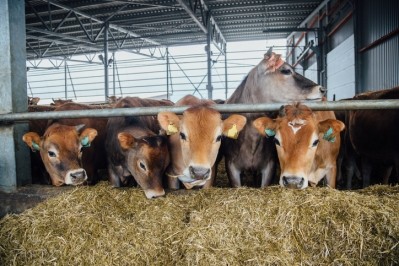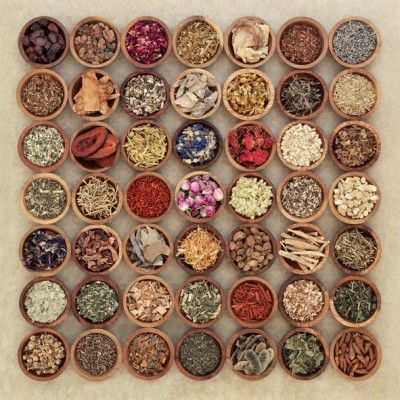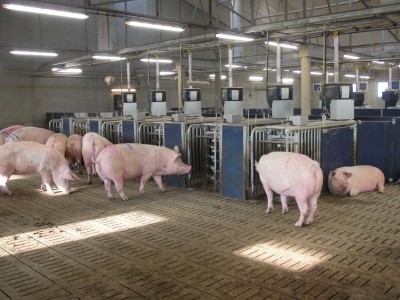Review claims multiple modes of action for essential oils in poultry production

A recent Elsevier publication, Essential Oils in Food Preservation, Flavor and Safety, includes a chapter by DuPont animal nutrition specialists, Ahmed Amerah and Arthur Ouwehand, on the use of EOs as additives in poultry diets.
The ban on the use of antibiotics as growth promoters in animal feed in many countries and the consumer demand for natural alternatives have increased interest in EOs in recent years, found the researchers.
However, though EOs are regulated in the EU and the US as sensory additives to improve feed intake or change the organoleptic properties of the feed, most research suggests a number of additional modes of action, wrote Amerah and Ouwehand.
As such, they called for systematic investigations into the relationship between EO flavor, antimicrobial, and antioxidant properties and bird performance and gut function “to optimize utility of EOs and to effectively expand the scope of regulatory approvals.”
Essential oils (EOs) are aromatic, volatile liquids obtained from plant material through steam distillation and named after the plant from which they are derived.
EOs can be defined as either products or mixtures of fragrant substances or as mixtures of fragrant and odorless substances.
These fragrant substances are chemically pure compounds that are volatile under normal conditions. EOs vary greatly, sometimes due to genetic causes, but also because of climate, rainfall, or geographic origin.
They are composed principally of lipophilic and highly volatile secondary plant metabolites, principally mono- and sesquiterpenes, but other types of compounds such as allyl and isoallyl phenols may also be present.
© Essential Oils in Food Preservation, Flavor and Safety (2016)
The authors found EOs as having benefits for the poultry sector in terms of improving feed intake, digestive enzyme secretion and boosting immune response to diseases.
They said several trials have also shown positive effects of EOs on nutrient utilization and poultry performance. “However, it appears that the degree of response may be influenced by the level and type of EO used, and the health status of the animal,” they added.
Antimicrobial mechanisms
EOs are chemically diverse, and, therefore, there are likely to be various mechanisms by which they exert their antimicrobial activity, found the review.
However, the authors noted EOs are generally hydrophobic and, therefore, are likely to enter into cell membranes of microbes and membranes of cell organelles in eukaryotes.
The effects that EOs exert on the cell are indicated by an upregulation of general stress responders such as GroEL and DnaK (Hyldgaard et al., 2012), they wrote.
Different EOs are likely to have different molecular targets, reported the DuPont specialists. This may explain why combinations of EO may be more effective than a single EO component (Bassole and Juliani, 2012) or in combination with other antimicrobial components (Langeveld et al., 2014), wrote the reviewers.
EOs and bird gut health
The researchers noted how the antimicrobial properties of essential oils can be selective against some pathogenic bacteria such as Escherichia coli and Clostridium perfringens and may stimulate the growth of other beneficial bacteria such as Lactobacillus and Bifidobacterium (Tiihonen et al 2010 and Mountzouris et al., 2011).
They cited a study from Si et al. (2009), which showed the effect of seven EOs on C. perfringens and Lactobacilli obtained from the chicken intestine.
"Most of the studied EO — 2-tert-butyl-6-methylphenol, carvacrol, chamomile roman oil, citral oil, citronellal, geraniol, and trans-cinnamaldehyde — showed inhibition of C. perfringens, but had little effect on the total number of Lactobacilli and anaerobic bacteria in the digesta," wrote the two reviewers.
Meanwhile, the authors cited the Ouwehand et al (2010) study, which found, under anaerobic conditions, that several C. perfringens strains were sensitive to carvacrol, cinnamaldehyde, citral, limonene, and thymol. Similarly, Timbermont et al. (2010), wrote the DuPont team, reported the growth of C. perfringens strain 56 was inhibited in vitro by low concentrations of thymol and cinnamaldehyde.
“These results were confirmed in animal trials which showed that specific blends of EO can control C. perfringens colonization and proliferation in the gut and therefore may be of help to reduce incidences of NE ( Mitsch et al., 2004),” wrote the reviewers.
The authors also noted an in vitro study showing artemisia, thyme, clove, or tea tree as being very efficient in destroying Eimeria oocyst at very low concentrations (Remmal et al., 2011).
They reported a positive effect of EOs on coccidiosis was previously illustrated in vivo as well (Giannenas et al., 2003).
The authors cited other studies showing cinnamaldehyde supplementation decreased gross lesion scores on the intestinal mucosa, reduced Eimeria acervulina oocyst shedding between five and nine days post-infection and increased Eimeria tenella-stimulated parasite antibody responses at nine days post-infection compared with controls in broilers challenged with coccidia (Orengo et al., 2012).
They noted a study by Giannenas et al. (2003) suggested birds infected with E. acervulina and fed a diet supplemented with dietary oregano oil had body weight gains and feed conversion ratios similar to the non-infected group.
Citing Windisch et al (2008), the reviewers also reported essential oils may reduce stress during critical situations and relieve the host animal from a strong immune defense, therefore helping animals to grow better.
“A study with broilers demonstrated that EO can increase immunoglobulin A levels, leading to improved intestinal immunocompetence and performance of young chicks (Kettunen et al., 2006),” found the authors.
They noted, though, the effects of EOs on the immune system were not consistent in all studies. “This variation in response between animal trials may be related to the health status of the animals in each trial. However, using genomics technology on the intestinal tissues in chickens supports the immune-enhancing properties of EOs (Lillehoj et al., 2011).”
Antioxidant effect of EOs in poultry
The reviewers also evaluated studies looking at the antioxidant properties of EOs in relation to poultry. They noted the common chemical structure of EOs contains double bonds, conjugated double bonds, and phenolic structures and that it is these structural characteristics allow for double bond rearrangements to function as antioxidants (Miguel, 2010).
“Thymol, carvacrol, and eugenol appear to be the most powerful antioxidants,” they wrote.
FCR benefits
While some studies have reported beneficial effects of EOs on weight gain (Ertas et al., 2005, Tiihonen et al., 2010 and Amerah et al., 2011), others reported no effect (Botsoglou et al., 2002 and Jang et al., 2007). For feed intake, it appears that EOs reduce feed intake in a majority of the animal trials which resulted in improvement in feed conversion ratio (Brenes and Roura, 2010), found the authors.
The reviewers noted Jamroz et al. (2005) reported no effect on body weight, but feed conversion improved by 4.2% on a maize-based diet and 2.0% on a wheat and barley diet when the diet was supplemented with plant extract consisting of capsaicin, cinnamaldehyde, and carvacrol.
“Similarly, Cabuk et al. (2006) reported a significant reduction in feed intake and improvement in feed conversion ratio (FCR) with no effect on weight gain in broilers fed EO derived from selected herbs [including] oregano oil, laurel leaf oil, sage leaf oil, myrtle leaf oil, fennel seed oil, and citrus peel oil,” found the reviewers.
Looking at the “limited” studies comparing AGP and EO in broiler diets, the performance response was also variable, wrote the authors.
Hernández et al. (2004), noted the DuPont team, reported that an EO blend, containing oregano, cinnamon, and pepper and labiatae extract from sage, thyme, and rosemary extracts, fed to broilers gave performance levels similar to those fed avilamycin. “In contrast, others reported better performance of EOs compared with AGPs in broiler chickens (Ertas et al., 2005 and Mountzouris et al., 2011).”
They wrote that the variable response in the different studies has been attributed to the type of EO used and the inclusion level (Ertas et al., 2005, Jamroz et al., 2005 and Cross et al., 2007).
Digestive enzyme secretion
Dietary supplementation of EO to poultry feed has been reported in several studies to stimulate digestive enzymes secretion. Total and specific activities of pancreatic trypsin, chymotrypsin, lipase, α-amylase, and intestinal maltase were found to increase in birds fed EOs (Jang et al., 2007 and Jamroz et al., 2005).
This stimulation of digestive enzymes may explain the improvement in nutrient digestibility with EO supplementation, they wrote.
Amerah et al. (2011), reported the DuPont team, attributed the improved weight gain in birds given EOs to the improvements in the ileal nitrogen digestibility observed with EO supplementation. They also noted the positive effect of EOs on amino acid digestibility, protein digestibility as well as dry matter digestibility has been observed in other studies such as Jamroz et al., 2003, Jamroz et al., 2005 and Hernández et al., 2004.
Source: Essential Oils in Food Preservation, Flavor and Safety
Title: Chapter 10 – Use of Essential Oils in Poultry Production
Published online ahead of print: doi:10.1016/B978-0-12-416641-7.00010-9
Authors: AM Amerah, AC Ouwehand















